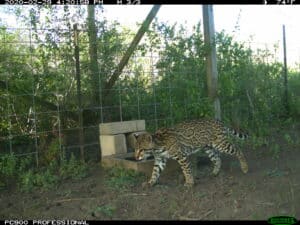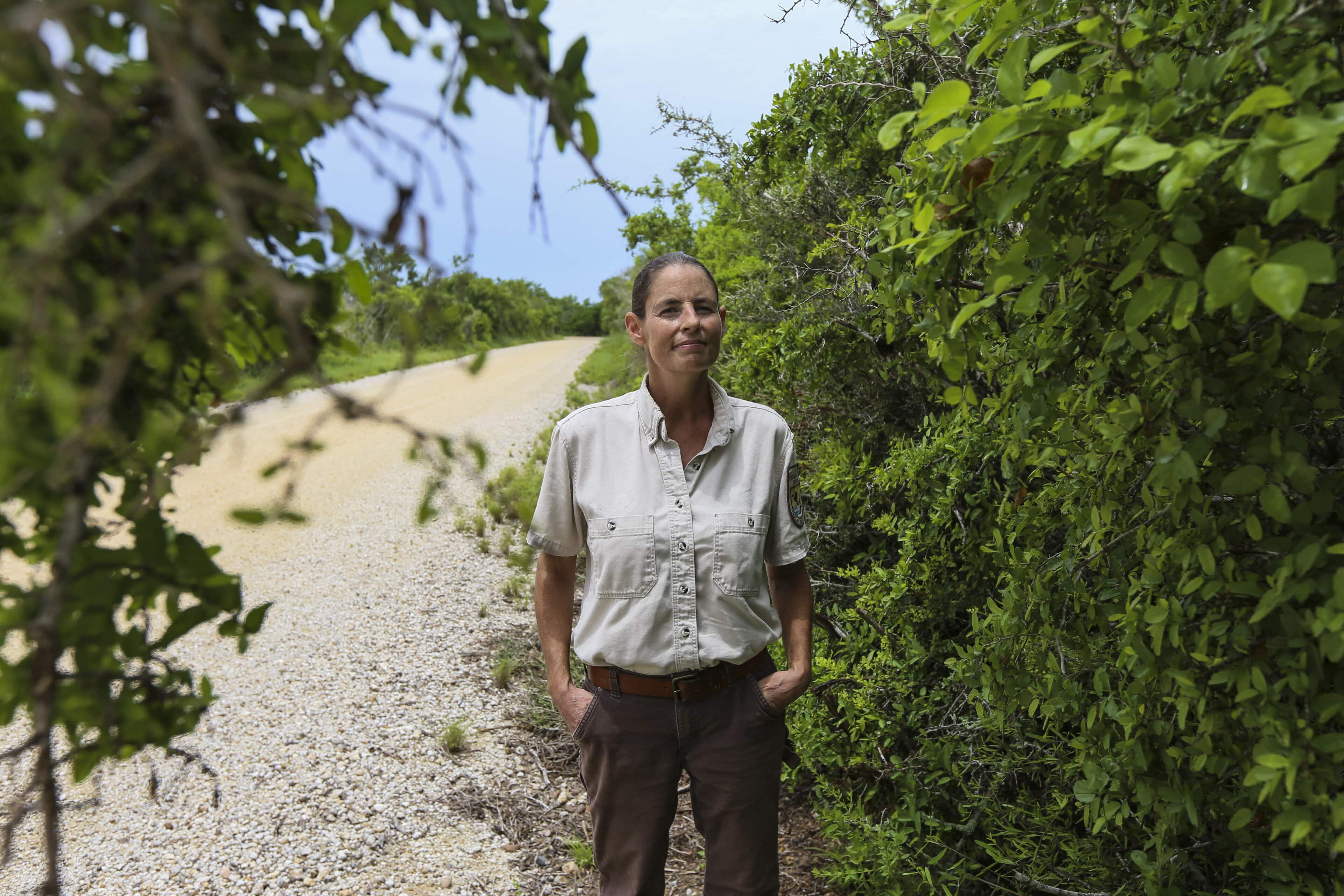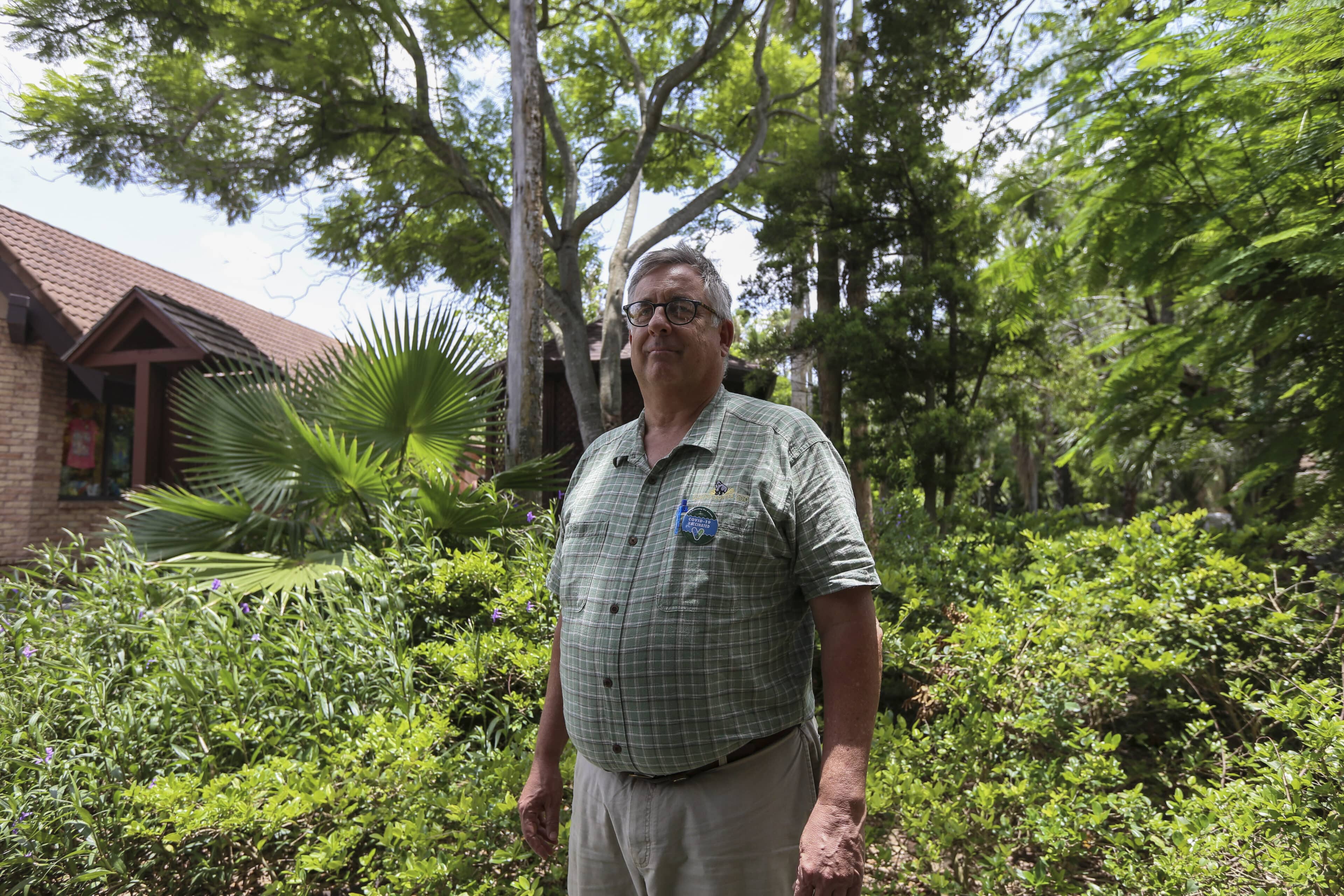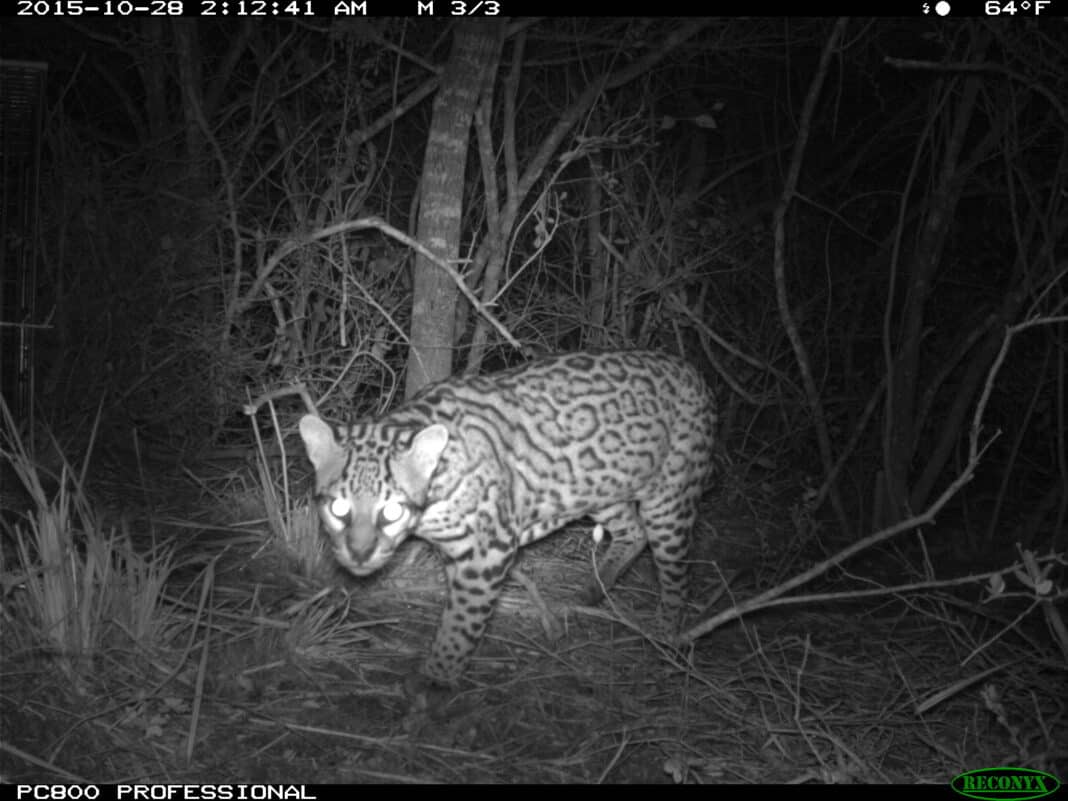
Quick action by wildlife biologists and experts at the Gladys Porter Zoo salvaged genetic material from a 9-year-old ocelot that was killed by a vehicle near Laguna Atascosa National Wildlife Refuge.
The traffic accident occurred several months ago, but active and motile sperm was collected from the dead male and has been frozen and will be used for artificial insemination of captive female ocelots.
The genetic material from the ocelot was salvaged by staff at the Cincinnati Zoo and Botanical Gardens and Conservation and Research of Endangered Wildlife, or CREW.
“We knew that any chance of success depended on collecting the cat and getting the sample to the Cincinnati Zoo as absolutely fast as possible,” said U.S. Fish and Wildlife Service biologist Hilary Swarts.

(Denise Cathey/The Brownsville Herald)
“It’s just incredible that we were able to obtain such a high-quality semen sample from a wild cat hit by a car in Texas 36 hours before,” said Bill Swanson, director of animal conservation research at CREW. “Only 60 to 80 individuals are estimated to remain in their native Texas habitat, so the importance of this sample, and the hope that it represents for the species, cannot be overstated.”
CREW will be using the deceased ocelot’s semen for an artificial insemination procedure at the ABQ BioPark in Albuquerque on July 28. If the procedure succeeds offspring will be born in October.
The dramatic salvage operation began early in the morning on May 18, when Swarts, an ocelot expert who works at Laguna Atascosa, was notified that a male ocelot had been hit by a car and killed just south of the refuge.
The cat had been studied at the refuge and had been fitted with tracking collars on three occasions over the preceding eight years. Working against time and rising temperature, Swarts placed the ocelot’s body in an ice chest and transported it to Gladys Porter Zoo in Brownsville.

With the assistance of Tom deMaar, senior zoo veterinarian, the testes were removed and chilled with ice packs for overnight shipping to the Cincinnati Zoo and Botanical Garden.
Some 36 hours after the fatal accident, Swanson processed the tissues for sperm recovery and it was found to have around a 60-percent motility, and it was preserved by freezing.
Over the past 25 years, CREW has been focused on assisted reproduction for the conservation of ocelots and other endangered feline species. To date, nine ocelot pregnancies have been produced at zoos using artificial means, including three litters from frozen and thawed semen.
Watch the full video below:





